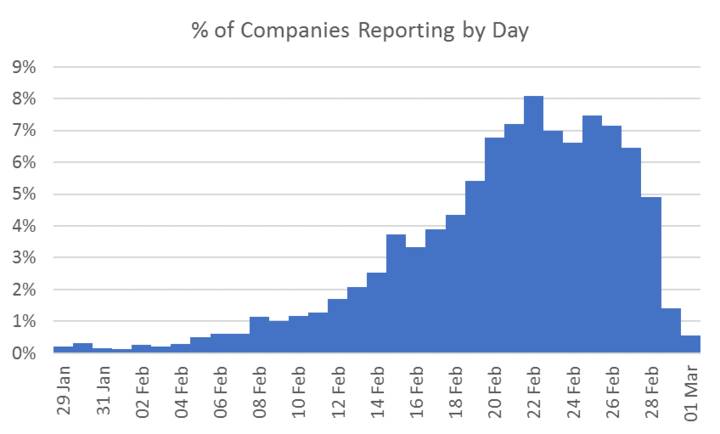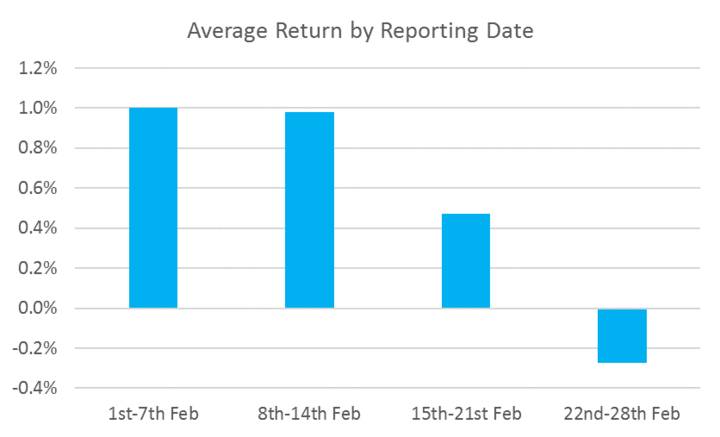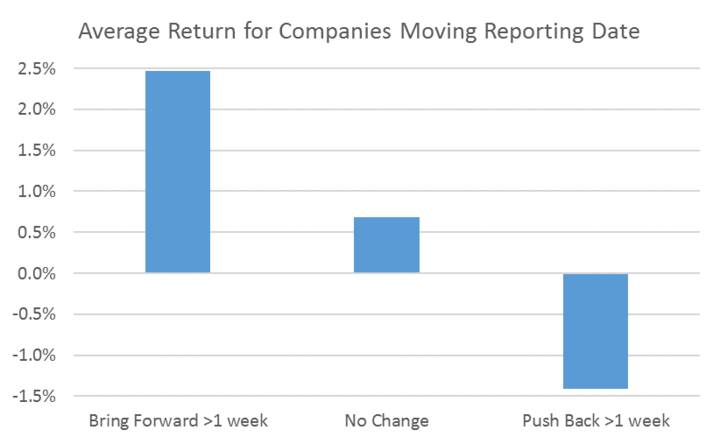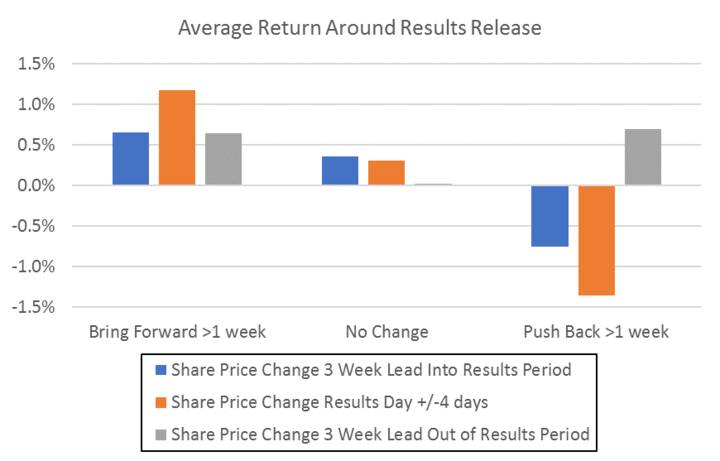The predictive power of analysing company reporting dates
With the February 2019 reporting season upon us, we were interested to see that one of the largest holdings in the AMP Capital Australian Emerging Companies Fund plan to release their half-year results a week earlier than in previous periods.
This got us thinking as to whether this implies a good result is coming, and whether the timing of when companies report within the month can be a predictive indicator of their performance over the period.
Reporting Dates
We collected historical data on over 600 companies (not all are still listed), covering their last nine years of reporting periods. Looking back through previous February reporting periods there is a steady ramp-up in companies reporting results through the month, peaking around the end of the third week and then tailing off slightly towards the end of the month.

Source: AMP Capital, Factset
Do companies reporting earlier in the month really outperform?
It’s a commonly held belief by fund managers that companies reporting earlier in the month typically post higher quality results, and managers tend to get nervous when they have to wait for companies to report at the back end of the month.
There is an intuitive element to this theory – companies that report early may have better systems in place, a good culture of meeting deadlines and a preference to deliver good news early, while those that wait until the last day (or even worse, those that wait until the morning of the first day of the following month) may be seen to be scrambling to get their accounts in order or want to delay the release of bad news for as long as possible.
Examining the data shows this belief to hold true historically – based on our analysis, returns around the reporting date steadily worsen as the month progresses. Stocks that report in the first and second weeks of the month have been shown to rise by around 1 per cent on average, while stocks reporting during the last week typically fall by 0.3 per cent. While the difference in returns may look immaterial, they add up over a number of reporting periods.

Source: AMP Capital, Factset. Note: Returns are calculated as starting four days before the result is reported, and ending four days post result.
Is a shifting reporting date a useful leading indicator?
Companies typically release their results around the same date every year, so when this date moves by a week or more, investors naturally question the motivation behind the change. Is a company reporting earlier than usual because they have a good set of numbers and want to get ahead of the noise of reporting season? Or is a company reporting later than normal having issues with their auditor or working out how to explain an unexpected downgrade?
Analysing the data we believe proves these theories to be true historically. Companies who bring forward their results by more than a week have tended to outperform by almost 2.5 per cent during a six-week period around the release date, and those that delay the release of results have tended to underperform by almost 1.5 per cent. The difference is significant.

Source: AMP Capital, Factset. Note: Returns are calculated as starting three weeks before the result is reported, and ending three weeks post result.
Another interesting point here is when the under or outperformance occurs. The chart below shows that the majority of the outperformance or underperformance takes place four days either side of the results release, however a portion (around +/-0.5 per cent in each case) occurs in the weeks leading up to results day. It suggests that some investors are using the change in results day as a buy/sell indicator.

Source: AMP Capital, Factset
Conclusion
We believe there is predictive power in analysing company reporting dates and monitoring any changes. The analysis presented here is an average of a large number of companies over a nine-year time period. That said, individual companies will have varying reasons for reporting during a specific time of the month, and may well have a perfectly valid reason for delaying the release of results.
However, investors should be wary of companies that delay results without a good reason, and a company reporting results earlier than normal may indicate positive news is just around the corner
1 topic

